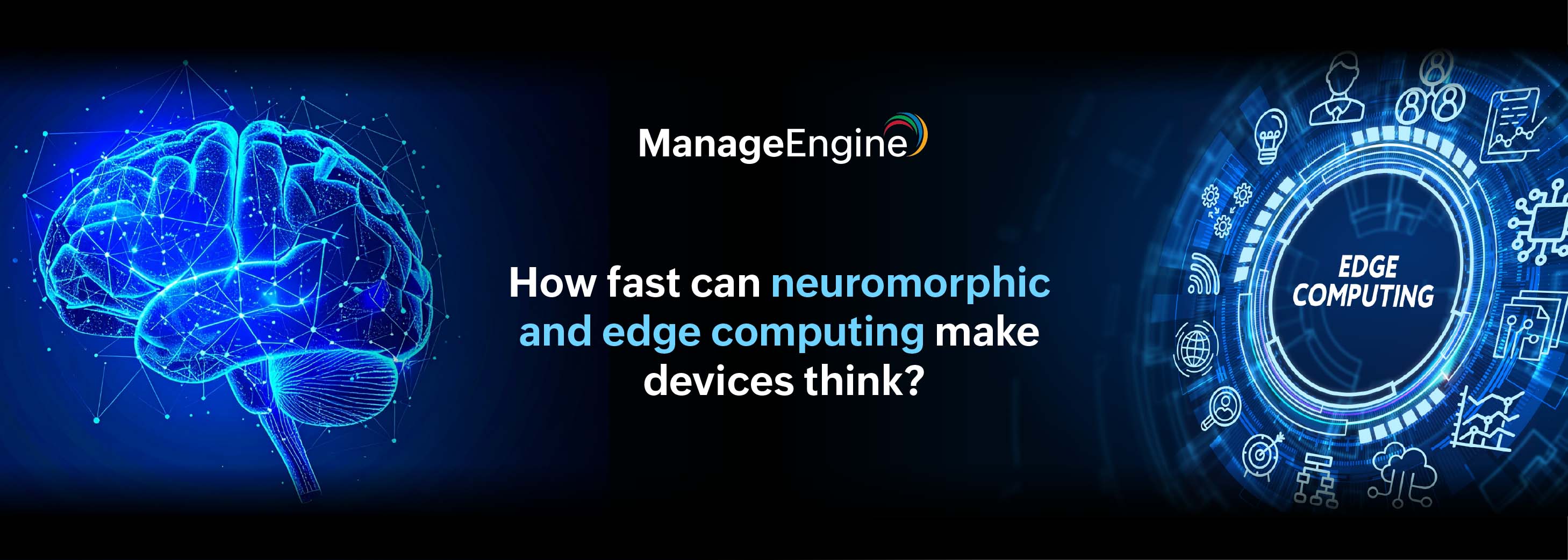If cars can brake before you do, what else can neuromorphic and edge computing do?

A delivery van slows as a cyclist swerves into its lane. The driver doesn’t touch the brakes. The van’s built-in brain reacts instantly to avoid a collision. Across town, a streetlight brightens as a pedestrian approaches. In a busy factory, a robotic arm stops mid-motion, shifts, and dodges a falling tool before continuing its task.
In each case, the machines are making split-second decisions on their own. No internet lag. No instructions from faraway servers. Everything happens right where and when it’s needed.
This new level of instant, smart decision-making is made possible by two technologies working together: neuromorphic computing and edge computing.
Neuromorphic computing
Our brains do not run at full speed all the time. Neurons work on demand, activating only when needed. Neuromorphic computing copies this idea.
Most computer chips keep running through tasks over and over even when nothing important is happening. Neuromorphic chips, wake up only when needed. They can handle many things at once, like the brain, and can learn and get better with experiences.
Think of a smart security camera in an empty office at night. Instead of recording hours of empty footage, it stays in low power mode. The moment it detects movement, it switches on records, works out what is happening, and decides what to do. All of this happens without the camera system having to send every frame to a server.
The United States leads the world in this technology. In 2024, the neuromorphic computing market in the United States is worth about $1.76 billion and is expected to reach over $12 billion by 2034. This growth is driven by research labs and industries using neuromorphic chips in self-driving cars manufacturing robots healthcare imaging and smart consumer devices.
Edge computing
Edge computing is about location. It means handling information close to where it is collected instead of sending it to a distant server.
This matters because:
Decisions are faster with no internet delay
Privacy is stronger because data stays on the device
Systems keep working even if the internet goes down
A smart traffic light is a good example. If it had to send every image to a faraway server before changing colors, traffic would slow to a crawl. With edge computing, the light can see what is happening and react instantly.
The US is also the largest market for edge computing. In 2023, it was worth almost $98 billion and is expected to grow to over $1.5 trillion by 2034.
Why combine the two
Neuromorphic computing gives devices the brains to learn, adapt, and understand complex patterns. Edge computing gives them the reflexes to act quickly without help.
When combined, they create machines that think and react like humans. They are fast-focused and use little energy.
In many devices today, traditional chips waste power by processing all data equally. Neuromorphic chips skip what is not needed and focus only on what matters in real time. A real-world example: A drone inspecting a wind turbine can spot a crack, report the details, and then change its flight path. Utilizing the combined strengths of these technologies, it is now capable of recording without draining its battery or being delayed by waiting for guidance provided by a cloud-based system.
Benefits
The combination of neuromorphic and edge computing provides advantages in several areas.
Saves energy
Neuromorphic chips can use as little as 1% to 10% of the power of normal processors. This means wearable health trackers or sensors can run for months without charging.
Acts in real time
From stopping a car to fixing a factory process, these systems respond in milliseconds.
Keeps your data private
Devices store personal information locally instead of sending it over the internet.
Works for any size device
From a small home sensor to a fleet of delivery robots, the same approach fits.
Challenges
Joining the two capabilities delivers powerful capabilities, but there are several challenges to overcome.
No common standards
There is no single set of rules for how different devices and platforms should work together. This makes it difficult to connect systems from different vendors.
High cost and complexity
Neuromorphic chips are expensive to make. Powerful edge hardware can also cost a lot up front, adding to the investment required before a project can start.
For years, most computing power has lived in the cloud, meaning devices like phones, sensors, or cameras mainly collected data and sent it over the internet to distant servers where all the processing and analysis happened. That worked when speed, privacy, and battery life were less important.
Now, with neuromorphic and edge computing, the balance is shifting. Devices can make their own decisions right where they are. They can react instantly to protect the data they collect and save power for when it is needed.
The smartest devices of the future will not be constantly asking for instructions. They will handle things themselves quietly and efficiently in the moment.